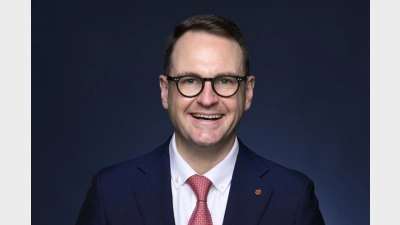ART completes latest merger, Qantas Super closes doors



Qantas Super has officially merged with ART over the weekend, with its CEO describing the “bittersweet” decision as being in the best financial interests of its members.
On 29 March, Qantas Super officially merged with the Australian Retirement Trust (ART), transferring over 25,000 members and approximately $9 billion in funds under management to the country’s second-largest superannuation fund.
Taking to LinkedIn to confirm the news, Qantas Super CEO Michael Clancy described serving both current and former members over the fund’s history as a “profound privilege and honour”.
“Qantas Super was founded in 1939 to provide retirement benefits to Qantas Group employees. In the 86 years since, we’ve been delivering on that commitment; through the turmoil of World War II, economic highs and lows, the technological change of the 21st century and everything in between,” Clancy said.
“As we pass the baton to ART, it is the close of this present chapter in the fund’s history and the beginning of another – with the establishment of the Qantas Group Super Plan in ART. And although this is a bittersweet moment for the Qantas Super team, I am super confident that merging Qantas Super into ART is in the best financial interests of our members.”
As confirmed by ART chair Andrew Fraser last month, Qantas Super’s members now join ART’s 2.4 million-strong base, benefiting from its global investment capabilities, financial advice services, and dedicated member support.
“We acknowledge Qantas Super’s long history and the care with which it has served its members, and we’re proud to take on this responsibility and support its members to awaken their future,” Fraser said at the time.
Qantas Super first announced its intention to explore merger options in September 2023, before finalising an agreement with ART in July. As one of the last remaining corporate funds, Qantas said it conducted a thorough assessment of its options, including the possibility of remaining an independent corporate super fund, before pursuing the merger with ART.
The superannuation landscape has been shifting for some time, with cost pressures, regulatory requirements, and heightened competition prompting many corporate funds to reassess their positions and plan their next steps.
Back in September, Super Review reported that industry experts predict fewer than a dozen corporate funds currently exist, with this number expected to decline further.
Ian Fryer, general manager at Chant West, said at the time that corporate funds have struggled with trying to navigate cost pressures in the current landscape.
“It’s just so expensive these days to run a super fund, with all the regulation, and rightly so. Super funds are getting so much bigger, with so much money, so this level of regulation is appropriate,” he said.
Similarly, Joshua Lowen, insights manager at SuperRatings, said that while larger employers have historically viewed corporate plans as a way to tailor and enhance their value proposition to employees, increased competition and regulatory reform are challenging corporate funds to meet the size and scale necessary to remain viable.
He said that, while tailored corporate solutions within larger funds will persevere, stand-alone corporate funds are unlikely to endure over the long term.
“This is less driven by their inability to meet the performance test than the sustainability of their cost structures when the number of new members available to the fund is limited,” Lowen said.
Chant West’s Fryer echoed this sentiment, saying that while some corporate offerings like ANZ Staff Super and the Goldman Sachs & JBWere fund have managed to work out a way to run at a “reasonably low cost”, the broader corporate fund landscape is likely to shrink.
“There are very few at the moment and probably, over time, we’ll see more of them wind up,” he told Super Review.
Recommended for you
Future Group is set to take on nearly $1 billion in funds under management (FUM) and welcome more than 100,000 new members following two significant successor fund transfers.
Insignia’s Master Trust business suffered a 1.9 per cent dip in FUA in the third quarter, amid total net outflows of $1.8 billion.
While the Liberal senator has accused super funds of locking everyday Australians out of the housing market, industry advocates say the Coalition’s policy would only push home ownership further out of reach.
Australia’s largest superannuation fund has confirmed all members who had funds stolen during the recent cyber fraud crime have been reimbursed.












